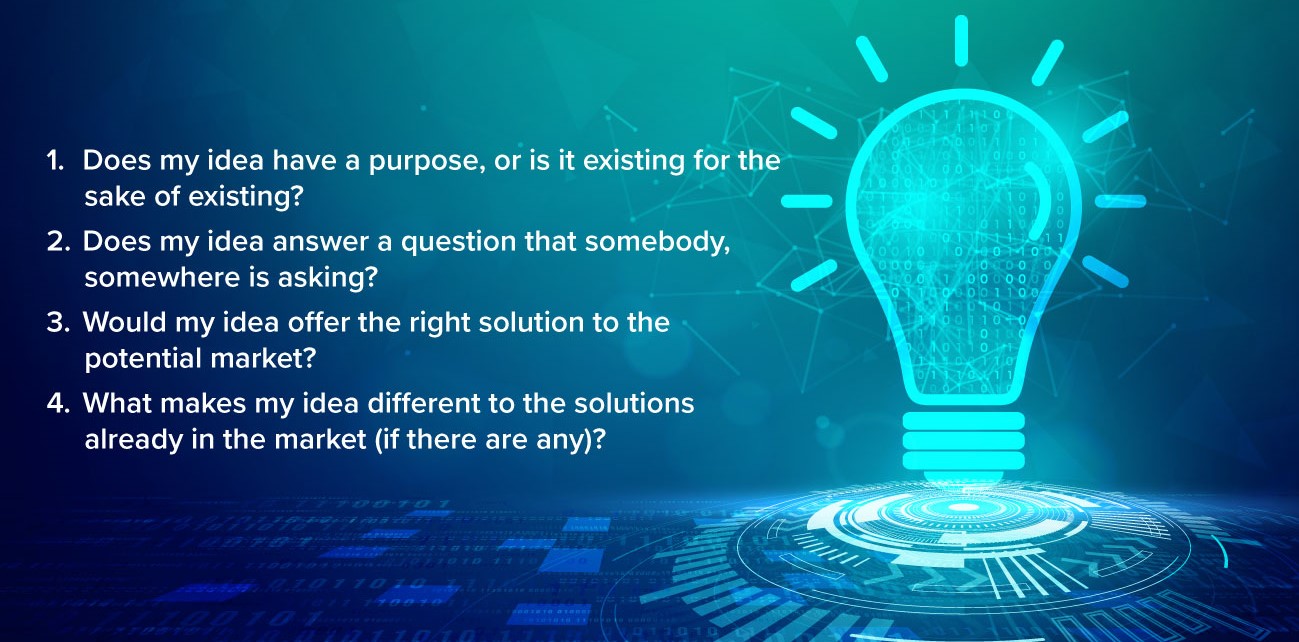Follow these 4 steps to turn your great ideas into reality
6 September 2023
Innovation specialist Stephen Slater answers the question we get asked a lot by SMEs: ‘How do I know which ideas to take forward?’
Great business ideas can come from anyone. That’s one of the reasons we’re massive believers at GC Business Growth Hub in encouraging creativity in the workplace by developing a culture that welcomes fresh ideas and different perspectives.
Great business ideas can also come at any time, with research showing that something as mundane as taking a shower can put your brain in the right setting for creative thinking [i]. Though as anyone who’s had a sudden flash of inspiration just as they’re drifting off to sleep, only for the lightbulb to have switched off by the morning, will testify… it pays to note ideas down before they’re forgotten.
For businesses, even those at the smaller end of the SME scale, having ideas isn’t usually the biggest problem: it’s knowing which ones to progress that is often the stumbling block.
Join more than 3,000 SMEs in Greater Manchester that have already benefitted from our
specialist innovation support, and find a clear pathway to new commercial opportunities.
Email BGHInnovation@growthco.uk or phone us on 0161 359 3050
How do I know which ideas to take forward?
So, how do you filter your ideas? Which should you focus on for creating a plan towards commercialisation? Consider this carefully, as decisions made at this early stage can save you a load of time and money further down the line.
My advice to SME leaders is to first reflect on the following question:
“Does my idea offer a valuable solution for a sector of society, which will see value in the proposition and the way it solves their problem or meets their need?”
Wordy, right? Let’s break it down further:


-
Does my idea have purpose?
You got out of the shower and remembered your idea! Now ask yourself whether you truly believe in it [ii]. A great idea has purpose and delivers a long term solution that will grow, so it’s important to understand what is driving you about that idea and why it’s important. As best-selling author Simon Sinek has pointed out, starting with your ‘why’ is a great first step [iii]. Why has this idea become your ‘why’?

-
Does my idea meet market demand?
You may know the marketplace well, or you may not, but building market research is vital [iv]. Research it thoroughly. Consider the drivers that are shaping it and how these might change. Identify the potential for future disruptions. Knowing the marketplace will help you understand potential competitors, your cost model and your route to market.
Make an honest assessment about the need your idea will meet and who the end users are. Think about their pain points: what task are they trying to accomplish and how does your idea help? Is there sufficient demand for a solution to this challenge – that enough people would be prepared to pay for? Or is the idea unviable in its present form and requires rethinking?

-
Does my idea offer the right solution?
This is where the hard work starts: testing your idea. Does it do what you thought it would? The quickest way to answer this is through prototyping. If your idea is for a physical product, make it. Make it out of whatever you have to hand. Use play clay, use toilet rolls, use wood. If you can feel it, hold it and use it, you’re on your way to seeing the potential in your idea, and what hurdles you need to overcome.
Similarly, if your idea is a piece of software or a service, map out what that looks like. Walk it through, change it, evolve it.
This stage also requires user testing. Ask friends and target users to get involved. Let them take your idea and scrutinise it. Accept that you won’t like all the feedback, and that’s ok, because progress comes from finding out what’s wrong, and fixing it.

-
What makes my idea better than all the others?
What is your idea’s unique selling point (USP)? It can be simply that is does something better than everything else in the market. It could be more complicated, and revolutionise a market. Whatever that USP is, consider how you tell people about it in a succinct and understandable way. Ask other people to review your pitch and your slide decks where you’re introducing your idea.
Your focus should be on transferring your passion and energy for the solution it provides to your marketplace, and guiding potential customers to how your idea can help them.
To highlight a successful idea that we all know, let’s look to James Dyson. He had an engineering idea that reimagined vacuum cleaning. His idea answered the question of how to simplify and improve the outcome of the task [v].
Dyson delivered the right solution at the right time – nobody else in the marketplace was doing it. The USP was beautifully delivered through storytelling, and the product’s design enabled it to be easily identifiable.
What do I do now?
Starting this journey can be tough, to say the least. Fortunately, there is fully-funded* support to help you get moving and bring your ideas to market.
Contact our specialist innovation team for personalised advice on how to turn your idea into reality.
*Most of our services are available at no cost to businesses, thanks to the backing of our funders.
Notes:
I. Buffer. ‘Why We Have Our Best Ideas in the Shower: The Science of Creativity’. Accessed 28/6/2023.
II. Patricia Bottero Saint-Jean, MBA. ‘Finding Your Purpose to Start a Business | LinkedIn’. Accessed 28/6/2023.
III. Simon Sinek. ‘Start With Why’. Accessed 28/6/2023.
IV. British Library Business & IP Centre. ‘Why is market research important for new business ideas?’ Accessed 28/6/2023.
V. Inc Magazine. ‘How I Did It: James Dyson’. Accessed 28/6/2023.
You may also be interested in: